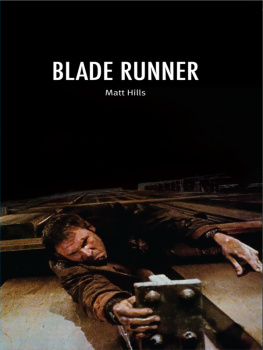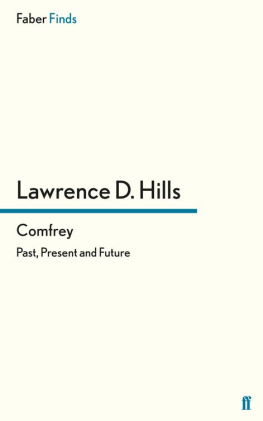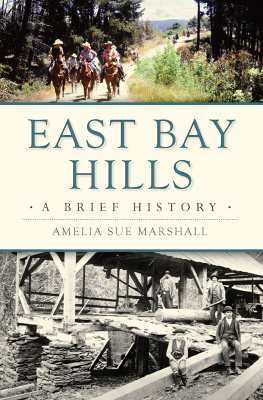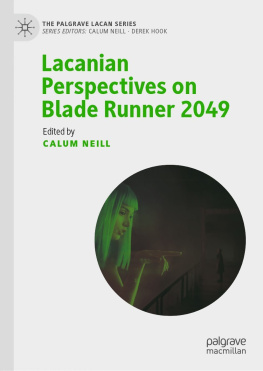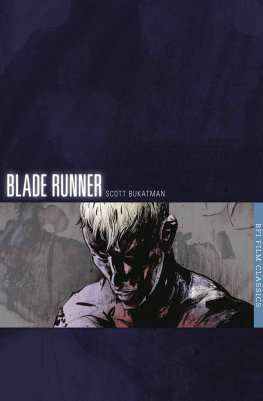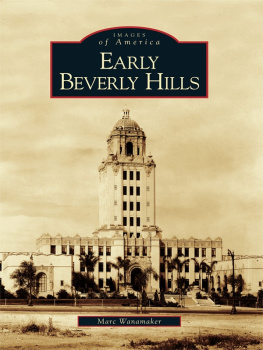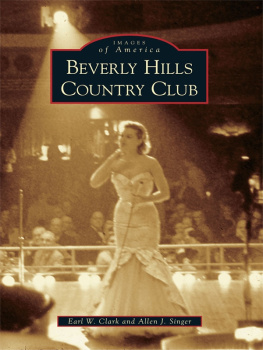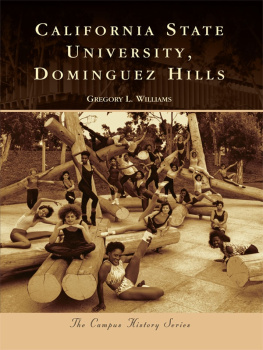Hills - Blade Runner
Here you can read online Hills - Blade Runner full text of the book (entire story) in english for free. Download pdf and epub, get meaning, cover and reviews about this ebook. City: London;New York, year: 2011, publisher: Wallflower Press, genre: Romance novel. Description of the work, (preface) as well as reviews are available. Best literature library LitArk.com created for fans of good reading and offers a wide selection of genres:
Romance novel
Science fiction
Adventure
Detective
Science
History
Home and family
Prose
Art
Politics
Computer
Non-fiction
Religion
Business
Children
Humor
Choose a favorite category and find really read worthwhile books. Enjoy immersion in the world of imagination, feel the emotions of the characters or learn something new for yourself, make an fascinating discovery.
- Book:Blade Runner
- Author:
- Publisher:Wallflower Press
- Genre:
- Year:2011
- City:London;New York
- Rating:5 / 5
- Favourites:Add to favourites
- Your mark:
- 100
- 1
- 2
- 3
- 4
- 5
Blade Runner: summary, description and annotation
We offer to read an annotation, description, summary or preface (depends on what the author of the book "Blade Runner" wrote himself). If you haven't found the necessary information about the book — write in the comments, we will try to find it.
Hills: author's other books
Who wrote Blade Runner? Find out the surname, the name of the author of the book and a list of all author's works by series.
Blade Runner — read online for free the complete book (whole text) full work
Below is the text of the book, divided by pages. System saving the place of the last page read, allows you to conveniently read the book "Blade Runner" online for free, without having to search again every time where you left off. Put a bookmark, and you can go to the page where you finished reading at any time.
Font size:
Interval:
Bookmark:
CULTOGRAPHIES
CULTOGRAPHIES is a new list of Individual studies devoted to the analysis of cult film. The series provides a comprehensive introduction to those films which have attained the coveted status of a cult classic, focusing on their particular appeal, the ways in which they have been conceived, constructed and received, and their place in the broader popular cultural landscape. For more information, please visit www.cultographies.com
Series editors: Ernest Mathijs (University of British Columbia) and Jamie Sexton (University of Wales, Aberystwyth)
OTHER PUBLISHED TITLES IN THE CULTOGRAPHIES SERIES
THE ROCKY HORROR PICTURE SHOW
Jeffrey Weinstock
DONNIE DARKO
Geoff King
THIS IS SPINAL TAP
Ethan de Seife
BAD TASTE
Jim Barratt
SUPERSTAR: THE KAREN CARPENTER STORY
Glyn Davis
THE EVIL DEAD
Kate Egan
BRING ME THE HEAD OF ALFREDO GARCIA
Ian Cooper
BLADE RUNNER
Matt Hills

WALLFLOWER PRESS
LONDON & NEW YORK
A Wallflower Book
Published by
Columbia University Press
Publishers Since 1893
New York Chichester, West Sussex
cup.columbia.edu
Copyright Matt Hills 2011
All rights reserved.
E-ISBN 978-1-906-66033-8
A complete CIP record is available from the Library of Congress
ISBN 978-1-906660-33-8 (pbk. : alk. paper)
ISBN 978-0-231-50464-5 (e-book)
Book design by Elsa Mathern
A Columbia University Press E-book.
CUP would be pleased to hear about your reading experience with this e-book at .
CONTENTS
Thanks must go to the series editors, Ernest Mathijs and Jamie Sexton, for developing something as engaged and engaging as Cultographies, and letting me write for the series. Thanks also to Yoram Allon at Wallflower, who first suggested a Blade Runner title. Will Brooker very helpfully forwarded his 2009 Popular Communication article in advance of its publication, without which this would have been a far less up-to-date argument, and Ross Garner kindly read and commented on a draft version of the manuscript.
Propsummit.com was a source of inspiration throughout the writing process; I enjoyed reading about the various fan projects there just as much as I enjoyed (repeatedly) watching Blade Runner for research purposes. Heartfelt thanks to all those who tolerated my immersive, rather anti-social spells of creative labour on this project, of course. And if Ive re-learnt one thing, personally, by virtue of working on this book, its that academic research really can develop and enhance the experiences of cult fandom. Oh, and Im still in the market for a 2019 Johnnie Walker bottle.
Matt Hills, Cardiff, April 2010.
For Stuart and Teresa heres one to add to the bookshelf!
There can be no denying that Blade Runner has excited a mass of scholarly work; a profusion of interpretation which has, perhaps, been matched in volume only by Blade Runner fandoms creativity and productivity. There have been multiple guides to the film (see, for example, Bukatman 1997; Lacey 2000) and two editions of Studying Blade Runner (Redmond 2003, 2008). Reference works, such as Paul M. Sammons Future Noir (1996, 2007), have also enjoyed revised editions. It is unsurprising, then, that some scholars may react with world-weary sentiment to the monumental pyramid of scholarship now surrounding Blade Runner. Reviewing a 2005 edited collection, The Blade Runner Experience, Andrew M. Butler responded: Enough already There are other films that might warrant some attention Here Blade Runner is not just a film which tanked at the box office then became a cult it is an industry (2008: 1423).
Butler hence alleges that Blade Runner has become part of an academic industry: publishers are supposedly cashing in on the films status, while academics are behaving like non-eclectic sheep, constantly writing about the same few texts rather than broadening their horizons. What the world does not need, we might suppose, is another book on Blade Runner. But the film has continued to exist industrially in the years since its first release, rather than merely being caught up in some sort of academic cash-in. Though it was hardly a box-office hit on its initial release shown in 1,290 theatres across the US it grossed only $6.15 million during its opening weekend (see Sammon 2007: 316) the 1992 Directors Cut grossed $29,557 in its opening US weekend (on 38 screens), while the 2007 Final Cut scored a very strong opening of $89,150 on just two screens (see IMDb 2009). The films most recent cinematic release had grossed $1,445,283 in the US by 30 March 2008 (ibid.) (excluding money made internationally and from new DVD and Blu-ray releases).
Enough already with Butlers line of thought: Blade Runner remains very much an industry quite apart from academias efforts. And this Cultographies title does something distinct in the annals of Blade Runner scholarship by specifically focusing on the movies cult status. To be sure, previous guides have included sections on this (see, for example, Lacey 2000: 801; Sammon 2007: 3219; Redmond 2008: 758), but no single volume has been tasked with the assignment of exploring discourses and theories of the LA 2019 cult. As such, I am conscious of not wanting to roundly reiterate material and factual information available elsewhere; hence this should not be considered as a one-stop introduction to Blade Runners world. Rather, it is designed as a contribution to one strand of debate: how and why has Blade Runner become a cult movie?
This question immediately calls for several definitions. We need to examine how cult itself has been theorised, of course. The next chapter introduces one major theory focused on textual qualities (Eco 1995), before exploring its blindspots. shifts away from text-based theories of cult to explore reception and audience-based approaches (Bourdieu 1984) taking in the commonly-cited flop turned cult idea before the final chapter pursues a more historicised, layered take on multiple cult audiences (Hills 2006, 2008). However, as well as defining cult, we also need to determine exactly what is meant by Blade Runner. I will address this question first, before briefly discussing my own personal relationship to the Blade Runner universe.
TRACKING DOWN THE TEXT, OR, WHAT ISBLADE RUNNER?
This may seem like an odd query. However, as Aaron Barlow observes in The DVD Revolution: these days, films as they are released on DVD may actually be purposefully more authoritative than the theatrical release Which, then, is the real film? (2005a: 25). This question of multiple versions is far more complex in relation to Blade Runner, of course, rather than merely involving a theatrical/DVD binary. The recent Final Cut (2007) was made available as part of the Ultimate Collectors Edition five-DVD set, presented alongside three different archival versions and the previously rare Workprint, making five commercially-available incarnations of the one movie. But it has been argued that there are further versions Sammon identifies seven in his Video Watchdog article, including the Criterion laserdisc as a separate de facto entry due to its then generous letterboxing (1993: 45), as well as separating the Workprint and Fairfax Cut. By 2007, Sammon had revised his estimate of variant versions downwards to six (not including the Final Cut), identifying the rough Workprint as identical to certain other reported versions (see 2007: 500). The five-disc DVD release of the Ultimate Collectors Edition (UCE) thus does not encompass all variations however minor that have circulated in the public domain. It does, however, make readily available the Workprint, a rough cut of
Next pageFont size:
Interval:
Bookmark:
Similar books «Blade Runner»
Look at similar books to Blade Runner. We have selected literature similar in name and meaning in the hope of providing readers with more options to find new, interesting, not yet read works.
Discussion, reviews of the book Blade Runner and just readers' own opinions. Leave your comments, write what you think about the work, its meaning or the main characters. Specify what exactly you liked and what you didn't like, and why you think so.

